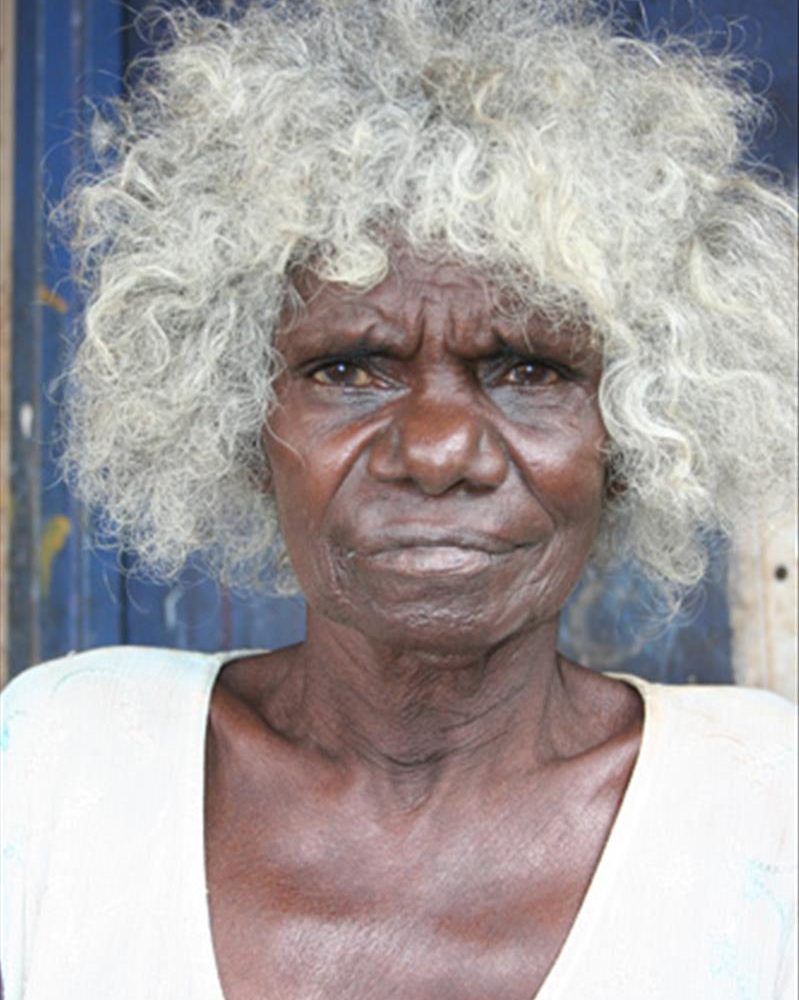
Djunginy was born in 1947 to father, acclaimed artist, Ngukmarmar and sister to artists Milpurrurru and Charlie Djurritjni. Djunginy is renowned for her contribution to contemporary Indigenous art, being one of the first Ramingining women to showcase her weaving skills on a global scale.
Best known for her pandanus dyed woven bottles and painted bottle form which has been the predominate motif throughout Djunginy work. The inspiration for this motif arose while living at Mulgurrum outstation, where several Italian Chianti bottles were amongst community. Encouraged to weave these bottles by then art curator Djon Mundine of Bula’Bula Arts, Djuniny bottles were soon found in many public institutions and private collections.
The bottle motif is also in reference to Djunginy Mother Group Marrangu Djinang, where the bottles, shaped like beehives, represent the honey story in Ramingining, Central Arnhem Land. In contrast, the woven bottle motif is also representative to the use and misuse of alcohol in all communities remote and urban.
Djunginy bottle motif is also depicted in painted form, however, the painted bottles were representations of the swampland in Ramingining, with the bottles depicting canoes gliding through the swamp water painted in tradition rarrk design.
Djunginy first exhibition was held in 1983 at the George Paton Gallery, Melbourne. Successfully awing the audience with the detail and colour of the woven bottles, her bottles were then featured in the 1998 Sydney Biennale, showcasing Indigenous weaving as contemporary art. Djunginy won the National NAIDOC 2011 Artist of the Year Award. Djunginy was commissioned for the 2013 Exhibition String Theory: Focus on Contemporary Art, held at the Museum of Contemporary Art, Sydney, NSW for her woven bottles, which received raving reviews from the public and critics alike.
Djunginy created one Dupun (Hollow Log) for the 1988 Aboriginal Memorial, an installation of over 200 Dupun commemorating the deaths of Indigenous people since white occupation The Aboriginal Memorial. The installation was exhibited at the Biennial of Sydney – beneath the Southern Cross, before moving to the National Gallery of Australia as a permanent display.
Djunginy has experienced great success both nationally and internationally; with over 30 group exhibitions, and work in numerous public and private collections, Djunginy continues to be a sought after artist.
>> CLICK HERE TO VIEW A SELECTION OF ARTWORKS
Selected Collections
- The Holmes at Court Collection, Perth
- Kluge-Ruhe Collection, University of Virginia, USA
- Museum and Art Gallery of the Northern Territory, Darwin
- Museum of Contemporary Art, Maningrida Collection, Sydney
- Museum of Contemporary Art, Ramingining Collection, Sydney
- National Gallery of Victoria, Melbourne
- National Gallery of Australia, Canberra
- Queensland Art Gallery, Brisbane
- South Australian Museum, Adelaide
- University of Wollongong
Selected Solo Exhibitions
- 2000 Robyn Djunginy Weaving
Selected Group Exhibitions
- 2015 Nganamarra as part of Tarnanthi Festival of Aboriginal and Torres Strait Islander Art
- 2015 Salon des Refuses
- 2015 Salon Des refuses
- 2011 Twining: Weaving and Abstraction: Robyn Djunginy, Debra Dawes, Karen Mills
- 2011 Woven Spirit, Gecko Gallery
- 2010 Prints and Pandanus, Nomad Art
- 2010 Twined: Robyn Djunginy, Karen Mills